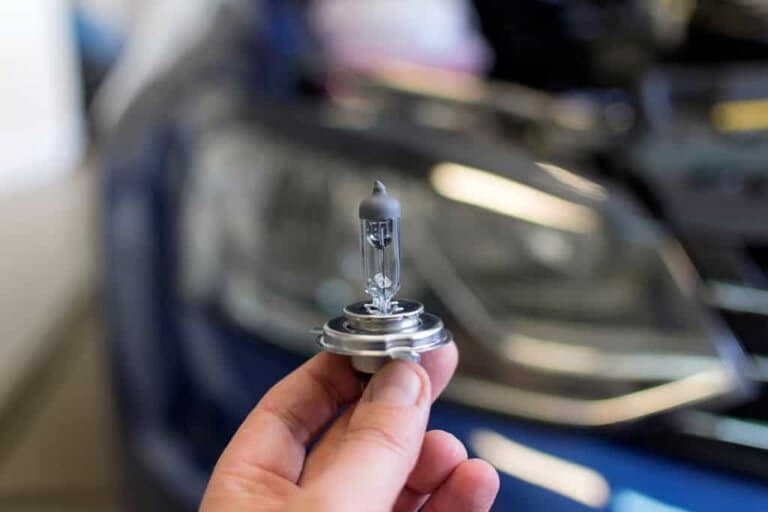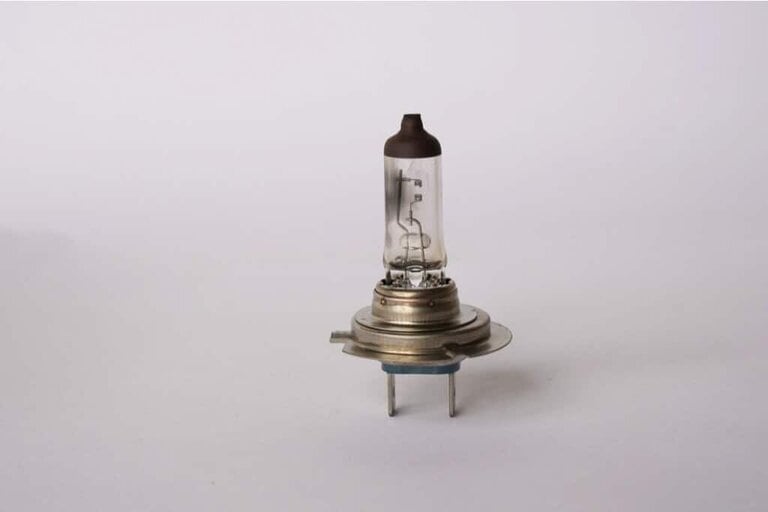The best way to tell if a halogen bulb is blown is with a multimeter. A blown bulb can also often be spotted either with the naked eye to see if the filament is broken or by shaking to hear if there is a rattle.
It can be very annoying when you go to switch on a light and all you get is darkness. Most of the time, people presume this is an issue caused by a blown bulb. They’ll throw away the bulb and fit a new one, only to find that it has happened again.
Has the bulb blown or is there something wrong with the light fitting? Thankfully, there are a few easy ways to check if your halogen bulb is still in good working order. Here we check them out and give you some useful info about your halogen bulbs.

What Is A Halogen Bulb?
Halogen light bulbs are an advanced type of incandescent bulb. The filament (thin tungsten wire) in the bulb is heated until it glows.
What makes a halogen bulb different from a traditional incandescent bulb is that it has halogen gas inside it, which helps to prevent the tungsten from oxidizing. This makes it glow longer than it would in the absence of gas.
The tungsten filament is sealed inside a transparent bulb which consists of halogen gas. So basically, there is a small bulb inside a regular bulb.
The combination of halogen and filament results in a halogen-cycle chemical reaction, which helps in redepositing the tungsten that is evaporated, thereby increasing its life.
The halogen bulb is known for high efficiency, light quality, and long-lasting life compared to regular incandescent bulbs. While they are more durable than ever, they can still be sensitive to the likes of wattage, vibration, and contamination.
This is why many presume a bulb has blown if the light isn’t working but that’s not always the case. If you inspect the bulb and see there is nothing wrong with it, the problem may be elsewhere.

Signs of a Blow Halogen Bulb
Check for the filament
A surge of electrical current can cause an overload in a weak point of filament wire. This results in the wire burning and breaking. A broken wire means that the circuit is open which does not allow the current to pass through it.
To check the filament, switch off the light first and remove the bulb. If your bulb has been in use for a while, wait for it to cool down. Never try to remove the bulb immediately after switching it off.
Now, check the bulb and see if it has a coating of black or dark gray color whereas in general, it should be clear.
The black coating indicates that the filament has burned out due to a defect in the chemical coating or due to an electrical issue that caused the filament to overheat and burn.
Sometimes the dark coating doesn’t occur but the filament is still broken. You can visually inspect the filament but even on large halogen bulbs, spotting this with the naked can be tough as filaments are incredibly thin.
Shake the bulb
This method is useful when you are unable to determine a burned filament by looking directly through the bulb. Remove the bulb when it is cooled off completely and then shake the bulb lightly.
If you hear any rattling sound from inside, this means that the filament has been broken, as a working bulb should not rattle at all.
It’s worth noting that not hearing a rattle doesn’t automatically mean that the bulb is working. The broken filament may not have anything to rattle against or there could be another non-filament-related problem with the bulb.
Look for a bubble
Halogen bulbs are very sensitive to contaminants such as oil or dust. If there is any bubble appearing on a bulb it represents a contaminant. Sometimes, the bulb works despite having bubbles on it.
If you continue to use it then the bubbles can crack the bulb. Hence, if you see any such signs then it is time to change the bulb as your halogen bulb might be already blown out or about to be burned out.

Testing the bulb using a multimeter
A multimeter is a portable device designed to measure electrical values such as voltage, resistance, and electric current.
Sometimes, even an intact filament bulb does not work. In such cases, a multimeter will help to determine if your halogen bulb is working or has blown out.
Multimeter helps to determine the continuity in a circuit, which is needed for a bulb to work.
Steps to test the bulb
Set your multimeter – Set the dial of the multimeter to the ‘ohm’ setting to measure resistance.
Test your multimeter – There are two leads: black and white which are negative and positive respectively. Plug the black lead to the common (COM) socket and the red lead to the volt socket.
Touch the two probes of the multimeter and see if the reading is zero or close to zero. This means that your multimeter is working fine and you can check the bulb with it.
Connect the pins – Once you are done testing your multimeter, it is time to check the bulb. Touch two small probes to a light bulb. Touch one to the bottom of the bulb on the button and the second probe to the side of the casing.
Check the reading – The reading varies for different types of bulbs. For incandescent bulbs like halogen bulbs, if the reading is showing zero that means your bulb has burned out and if it is showing above zero, it means it is working.
FAQs On How to Tell If a Halogen Bulb Is Blown
How long should halogen bulbs last
Most halogen bulbs are rated for an approximate lifetime of 2,000 hours. At five hours per day, this would equate to 400 days.
What is the best way to know if the halogen bulb has blown?
It takes good eyesight but you can usually see a broken or burned filament. Hearing a rattle when you shake is also a bad sign. The best way to confirm a blown bulb is by using a multimeter.
Should I replace halogen bulbs with LED?
You probably should. LED lights use less energy and have a far superior lifespan.
